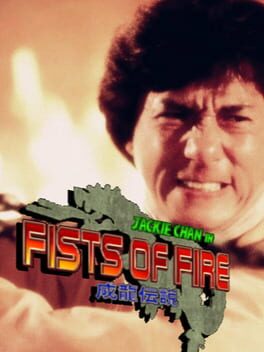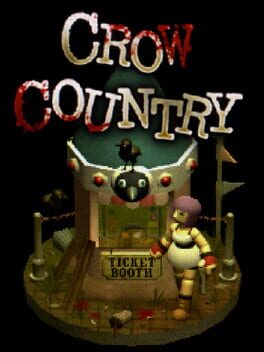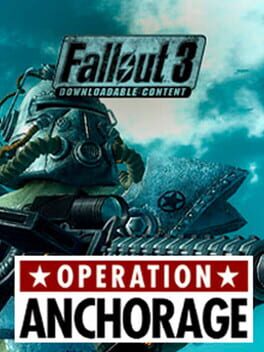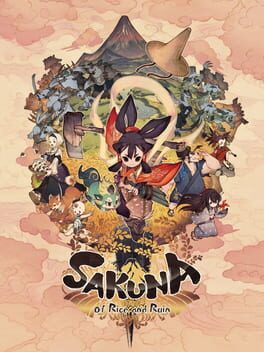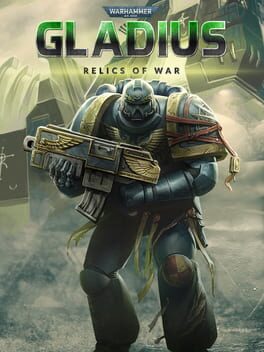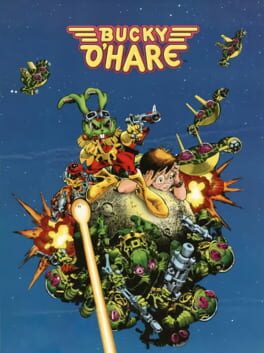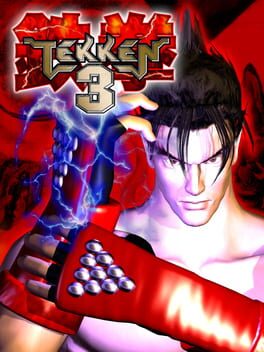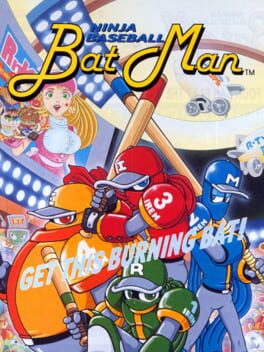Dreamboat
1501 Reviews liked by Dreamboat
also, believe it or not, went 0-2 at combo breaker. probably the game i felt the best at though, it's fast paced but the pressure and combos are really easy and i honestly think anybody could be good at this game if they put a little time into it.
for clarification: my reviews got removed because they were all the same. sad!
for clarification: my reviews got removed because they were all the same. sad!
Telling Lies
2019
Doesn't matter what time of I day I played it, this shit had me DOZING, not in a "this is boring" way but literally falling asleep to the muted color palette, the long stretches of silence, the anonymous music... Sam Barlow pioneering some exciting new innovations in the hypnagogia-core field...
It's a decent enough depiction of the surveillance state, a subject which games have never handled with much grace. The main visual metaphor, your character's reflection looming just barely visibly over everything she watches, got old quick. Who are they telling the lies to? Ah, me, of course. Nice that they could spring for some decent actors with that Annapurna money - I like Kerry Bishe a lot, and they're all fairly convincing in spite of what must have been an awkward shooting strategy (Logan Marshall-Green seems a bit embarrassed from time to time).
The ecoterrorism plot was rote... I was much more interested in unpacking this dude's psychosexual baggage. Cop can't suspend his violent, possessive, misogynistic impulses even when he's cosplaying as a treehugging lefty? Sounds about right!
It's a decent enough depiction of the surveillance state, a subject which games have never handled with much grace. The main visual metaphor, your character's reflection looming just barely visibly over everything she watches, got old quick. Who are they telling the lies to? Ah, me, of course. Nice that they could spring for some decent actors with that Annapurna money - I like Kerry Bishe a lot, and they're all fairly convincing in spite of what must have been an awkward shooting strategy (Logan Marshall-Green seems a bit embarrassed from time to time).
The ecoterrorism plot was rote... I was much more interested in unpacking this dude's psychosexual baggage. Cop can't suspend his violent, possessive, misogynistic impulses even when he's cosplaying as a treehugging lefty? Sounds about right!
Crow Country
2024
Fallout 3: The Pitt
2009
Okay nevermind my Operation Anchorage review.
Coming back to it as an adult with a fully formed brain and an actual belief system, The Pitt is my least favourite FO3 expansion by a country mile.
In part because while the others are bad, The Pitt is both bad and actually offensive.
Fallout 3 already has problems with invoking the imagery and motifs of American Slavery - a very real thing that scarred entire generations for about three centuries, killed hundreds of thousands of very real people and ruined tons of very real countries - while attempting to be impartial and ~nonpolitical~.
Fallout 2 is a dogshit-ass game that I have little love for, but when it brought slavery into the equation it had the correct idea of not invoking the Civil Rights Movement and associated iconography.
Fallout 3 had no such wisdom, which means you use an "underground Railroad movement" to free uh... A white man. Hey fun fact, the black leader of the escaped slaves - Hannibal Hamlin - is white in his ending slide
The Pitt doubles down on this in the worst way possible: By trying to Both Sides slavery.
Let's just lay out Ishmael Ashur's whole deal, right?
Ashur is an insane but erudite ex-Brotherhood religious zealot who, upon seeing a city dominated by endless hordes of cannibalistic murder-rapist Raiders, decided it would be best if he built a manufacturing empire out of its corpse. This empire is built with slave labor. Lots and lots and lots of slave labor. Slave labor that, given Ashur buys from Fallout 3's slave labor, almost certainly includes children too. These slaves die at such a rapid pace that external slavers are struggling to fulfill the shipment quotas thanks the horrific meat treadmill Ashur runs.
This regime is enforced by a system of eugenics (wherein slaves aren't allowed to have children), propaganda (in which Ashur promises all this is a "temporary measure" and that slaves can "earn" their freedom in brutal gladiator battles) and a caste of ex-raiders who - despite Ashur's alleged reformation - are still murderous rapists that are far too eager to torture, kill or maim slaves.
Aaaaaaaaaaaaaaaaaaaaaaaaaaaaaaaaaaaaand The Pitt wants you to consider him a valid choice against his opponent.
Wernher is a bit of a dick, he's blunt and to the point at all times. He doesn't really care about the slaves but is entirely willing to free them for his goals. All he asks of you is that you steal a baby.
"WHOA!" Said most of the gaming landscape and also all of FO3's writers. "Stealing a baby is fucked up. This is such a morally grey choice."
But to take The Pitt's main dilemma as a morally choice is to not at all interrogate the seting, which is a really embarassing thing to happen when you wrote it.
Let's just interrogate it right here, shall we? Fun teambuilding exercise.
The core conceit of this allegedly "morally grey choice" is that Marie, as a literal baby, is innocent of the sins of her parents and thus shouldn't be subject to harm as a means to punish them. This is fair on its own, but to take that at face value means either deliberately or incidentally having major blindspots.
First of all, despite Wernher declarig he doesn't give a shit about Marie's health, it's also stated more than a few times that Midea - her carer if you side with the slaves - is looking after her during the experiments... Experiments which also happen if you side with Ashur.
Secondly, The Pitt naturally doesn't bother depicting child slavery - ostensibly due to developer cowardice - even though it's abundantly clear that's a thing given the connection between Paradise Falls (a place that sells to The Pitt and has numerous child slaves) and The Pitt, plus The Pitt is infinitely larger than is depicted ingame. With that in mind, one has to ask: What makes Marie more entitled to safety than the child slaves that're almost certainly a part of Ashur's great 'empire'? Sure, she's a baby, but this machine has already trampled over the corpses of children.
Third, and perhaps the most impactful question: What happens to the children born of Ashur's slaves? I like this one because there's no answer that makes the slavers look good. If the children are enslaved, then there's the obvious caveat; they're enslaving children. If the children are free, then the slavers steal children from their parents to be indoctrinated as brutal, amoral raiders. How is it worse, then, to steal a baby away to relative safety? It may not be squeaky clean, but no liberation movement ever was and the opposition are hardly innocent angels.
Ashur's sole defence when confronted with his crimes is that this is a "temporary, necessary measure" on the road to "emancipation" for everyone, which... does not work. At all.
To buy into this is to believe that Ashur's Raiders, with all their brutality and slavery and their entire arsenal of systemic oppression, would relinquish total control over The Pitt and elevate the slaves to a position of equality.
I regularly lay into Bethesda Fallout for being overly cynical garbage written by people who're emotionally still 14, but in the case of The Pitt I feel that cynicism has dug a grave for the story pre-emptively. If you take Bethesda Fallout at face value, it encourages the player to view things cynically and bitterly. Why should The Pitt get an exception? Nothing about this DLC stokes optimism.
It feels like this DLC was made by and for people who think Malcolm X was bad because he advocated for violent resistance, or think that any social movement is only valid so long as it remains entirely peaceful, quiet and out of mind. The core dilemma just falls apart entirely if questioned or interrogated at all, so while it might appeal to people who say the words "thinking too hard" about people who take videogames even slightly seriously, it must be pure brain poison to people who actually use that wet sack of meat inside their skull.
In other, less kind words: This DLC sucks doodoo shit and the writers should find jobs working as janitors in a kitchen - not chefs, because they clearly can't cook shit.
The only slightly redeeming part of this DLC is the Steel Ingot collectathon; a treasure hunt where you can scavenge up to 100 ingots in a map that's relatively well designed and may be the only cell in FO3 with any real thought in it. It's not very long if you, like me, have memorized the route, but the area it takes place in is relatively atmospheric and also conveniently disconnected from the overall conflict.
That the only good part is entirely detached from the rest of the DLC should be all the review you need, honestly.
Coming back to it as an adult with a fully formed brain and an actual belief system, The Pitt is my least favourite FO3 expansion by a country mile.
In part because while the others are bad, The Pitt is both bad and actually offensive.
Fallout 3 already has problems with invoking the imagery and motifs of American Slavery - a very real thing that scarred entire generations for about three centuries, killed hundreds of thousands of very real people and ruined tons of very real countries - while attempting to be impartial and ~nonpolitical~.
Fallout 2 is a dogshit-ass game that I have little love for, but when it brought slavery into the equation it had the correct idea of not invoking the Civil Rights Movement and associated iconography.
Fallout 3 had no such wisdom, which means you use an "underground Railroad movement" to free uh... A white man. Hey fun fact, the black leader of the escaped slaves - Hannibal Hamlin - is white in his ending slide
The Pitt doubles down on this in the worst way possible: By trying to Both Sides slavery.
Let's just lay out Ishmael Ashur's whole deal, right?
Ashur is an insane but erudite ex-Brotherhood religious zealot who, upon seeing a city dominated by endless hordes of cannibalistic murder-rapist Raiders, decided it would be best if he built a manufacturing empire out of its corpse. This empire is built with slave labor. Lots and lots and lots of slave labor. Slave labor that, given Ashur buys from Fallout 3's slave labor, almost certainly includes children too. These slaves die at such a rapid pace that external slavers are struggling to fulfill the shipment quotas thanks the horrific meat treadmill Ashur runs.
This regime is enforced by a system of eugenics (wherein slaves aren't allowed to have children), propaganda (in which Ashur promises all this is a "temporary measure" and that slaves can "earn" their freedom in brutal gladiator battles) and a caste of ex-raiders who - despite Ashur's alleged reformation - are still murderous rapists that are far too eager to torture, kill or maim slaves.
Aaaaaaaaaaaaaaaaaaaaaaaaaaaaaaaaaaaaand The Pitt wants you to consider him a valid choice against his opponent.
Wernher is a bit of a dick, he's blunt and to the point at all times. He doesn't really care about the slaves but is entirely willing to free them for his goals. All he asks of you is that you steal a baby.
"WHOA!" Said most of the gaming landscape and also all of FO3's writers. "Stealing a baby is fucked up. This is such a morally grey choice."
But to take The Pitt's main dilemma as a morally choice is to not at all interrogate the seting, which is a really embarassing thing to happen when you wrote it.
Let's just interrogate it right here, shall we? Fun teambuilding exercise.
The core conceit of this allegedly "morally grey choice" is that Marie, as a literal baby, is innocent of the sins of her parents and thus shouldn't be subject to harm as a means to punish them. This is fair on its own, but to take that at face value means either deliberately or incidentally having major blindspots.
First of all, despite Wernher declarig he doesn't give a shit about Marie's health, it's also stated more than a few times that Midea - her carer if you side with the slaves - is looking after her during the experiments... Experiments which also happen if you side with Ashur.
Secondly, The Pitt naturally doesn't bother depicting child slavery - ostensibly due to developer cowardice - even though it's abundantly clear that's a thing given the connection between Paradise Falls (a place that sells to The Pitt and has numerous child slaves) and The Pitt, plus The Pitt is infinitely larger than is depicted ingame. With that in mind, one has to ask: What makes Marie more entitled to safety than the child slaves that're almost certainly a part of Ashur's great 'empire'? Sure, she's a baby, but this machine has already trampled over the corpses of children.
Third, and perhaps the most impactful question: What happens to the children born of Ashur's slaves? I like this one because there's no answer that makes the slavers look good. If the children are enslaved, then there's the obvious caveat; they're enslaving children. If the children are free, then the slavers steal children from their parents to be indoctrinated as brutal, amoral raiders. How is it worse, then, to steal a baby away to relative safety? It may not be squeaky clean, but no liberation movement ever was and the opposition are hardly innocent angels.
Ashur's sole defence when confronted with his crimes is that this is a "temporary, necessary measure" on the road to "emancipation" for everyone, which... does not work. At all.
To buy into this is to believe that Ashur's Raiders, with all their brutality and slavery and their entire arsenal of systemic oppression, would relinquish total control over The Pitt and elevate the slaves to a position of equality.
I regularly lay into Bethesda Fallout for being overly cynical garbage written by people who're emotionally still 14, but in the case of The Pitt I feel that cynicism has dug a grave for the story pre-emptively. If you take Bethesda Fallout at face value, it encourages the player to view things cynically and bitterly. Why should The Pitt get an exception? Nothing about this DLC stokes optimism.
It feels like this DLC was made by and for people who think Malcolm X was bad because he advocated for violent resistance, or think that any social movement is only valid so long as it remains entirely peaceful, quiet and out of mind. The core dilemma just falls apart entirely if questioned or interrogated at all, so while it might appeal to people who say the words "thinking too hard" about people who take videogames even slightly seriously, it must be pure brain poison to people who actually use that wet sack of meat inside their skull.
In other, less kind words: This DLC sucks doodoo shit and the writers should find jobs working as janitors in a kitchen - not chefs, because they clearly can't cook shit.
The only slightly redeeming part of this DLC is the Steel Ingot collectathon; a treasure hunt where you can scavenge up to 100 ingots in a map that's relatively well designed and may be the only cell in FO3 with any real thought in it. It's not very long if you, like me, have memorized the route, but the area it takes place in is relatively atmospheric and also conveniently disconnected from the overall conflict.
That the only good part is entirely detached from the rest of the DLC should be all the review you need, honestly.
My least favourite FO3 expansion is ironically the one I enjoy talking about the most because it's uniquely terrible.
On the surface it's (ostensibly - I may be putting too much faith in the writers) a straightforward parody of what was, at the time, every shooter on the market: You are simultaneously a nobody and a legend, the entire US military cannot do anything without you, and there's no real way to engage with the world beyond murdering people in linear, grey hallways.
This is only aided by the in-universe notes/audio logs that make it obvious the simulation is massively detached from reality at the behest of an insane, sinophobic American general. So it's an in-universe parody as well an out-of-universe one.
There's just one big stinky winky dinky problem:
The parody doesn't work because the core of it is what Fallout 3 already is.
Fallout 3 at its core is a game where you walk through unwieldy shooting galleries in boring environments, endlessly massacring nearly everything you come across in areas that're 99% of the time either linear hallways or intersections that lead to linear hallways.
The only meaningful difference between OA and the game it's bolted onto is that Fallout 3 very occasionally pretends to be an RPG and lets you talk to someone. Even then, 9/10 times you either kill them or having a big prompt that lets you do so.
Perhaps what makes OA so much worse is that it's a thinly-veiled excuse to deposit some loot on you. Your incentive to do the DLC isn't "see this cool place", "free some slaves", "finish the main story" or "aliens, right?", no. You're told in no unclear terms that you should do this DLC for the loot that's in the vault. That's it.
I'll speak on it in more depth when I finish the actual Fallout 3 review, but the actual rewards you get really compound the game's overall issue with loot being meaningless. Namely, OA is perhaps the only part of FO3 that features a reward dump that isn't shit. The stealth armor, winterized T-51B, shocksword and gauss rifle are all excellent regardless of one's build, and given how easy OA is they're functionally free.
But there's a lot in the vault that I can only describe as nothing more than shelf-filling garbage. Upon slogging through OA and opening it, you'll be met with uh... A Chinese Assault Rifle, some ammo for it, and a Missile Launcher, alongside lots of mines and grenades. All incredibly common loot in the wasteland, to the point where I don't blame anyone for thinking the vault is bugged when they see so much trash loot.
And, all things considered, it probably is bugged or at least unfinished. As is the norm for Bethesda games, there's a bevy of cut content for this DLC and the vast majority of it is stuff that'd fit in the loot vault - most noticeably reskins of the sim weapons but without the bloated HP. Which would still be unremarkable, but at least it'd be unique - that simulation exclusive Chinese Assault Rifle looks gorgeous.
The extra 0.5 of a star rating only comes from me having played this through Tale of Two Wastelands, which makes it less of a slog (due to your armor's DT/DR outclassing that of your enemies) and fills the vault with all the aforementioned cut content - plus some other goodies.
The only saving grace to this DLC is that it's perhaps the first and only time I've agreed with people who're fans of Bethesda's Fallout: They hated it at release, so do I.
They still hate it in 2024, and so do I.
On the surface it's (ostensibly - I may be putting too much faith in the writers) a straightforward parody of what was, at the time, every shooter on the market: You are simultaneously a nobody and a legend, the entire US military cannot do anything without you, and there's no real way to engage with the world beyond murdering people in linear, grey hallways.
This is only aided by the in-universe notes/audio logs that make it obvious the simulation is massively detached from reality at the behest of an insane, sinophobic American general. So it's an in-universe parody as well an out-of-universe one.
There's just one big stinky winky dinky problem:
The parody doesn't work because the core of it is what Fallout 3 already is.
Fallout 3 at its core is a game where you walk through unwieldy shooting galleries in boring environments, endlessly massacring nearly everything you come across in areas that're 99% of the time either linear hallways or intersections that lead to linear hallways.
The only meaningful difference between OA and the game it's bolted onto is that Fallout 3 very occasionally pretends to be an RPG and lets you talk to someone. Even then, 9/10 times you either kill them or having a big prompt that lets you do so.
Perhaps what makes OA so much worse is that it's a thinly-veiled excuse to deposit some loot on you. Your incentive to do the DLC isn't "see this cool place", "free some slaves", "finish the main story" or "aliens, right?", no. You're told in no unclear terms that you should do this DLC for the loot that's in the vault. That's it.
I'll speak on it in more depth when I finish the actual Fallout 3 review, but the actual rewards you get really compound the game's overall issue with loot being meaningless. Namely, OA is perhaps the only part of FO3 that features a reward dump that isn't shit. The stealth armor, winterized T-51B, shocksword and gauss rifle are all excellent regardless of one's build, and given how easy OA is they're functionally free.
But there's a lot in the vault that I can only describe as nothing more than shelf-filling garbage. Upon slogging through OA and opening it, you'll be met with uh... A Chinese Assault Rifle, some ammo for it, and a Missile Launcher, alongside lots of mines and grenades. All incredibly common loot in the wasteland, to the point where I don't blame anyone for thinking the vault is bugged when they see so much trash loot.
And, all things considered, it probably is bugged or at least unfinished. As is the norm for Bethesda games, there's a bevy of cut content for this DLC and the vast majority of it is stuff that'd fit in the loot vault - most noticeably reskins of the sim weapons but without the bloated HP. Which would still be unremarkable, but at least it'd be unique - that simulation exclusive Chinese Assault Rifle looks gorgeous.
The extra 0.5 of a star rating only comes from me having played this through Tale of Two Wastelands, which makes it less of a slog (due to your armor's DT/DR outclassing that of your enemies) and fills the vault with all the aforementioned cut content - plus some other goodies.
The only saving grace to this DLC is that it's perhaps the first and only time I've agreed with people who're fans of Bethesda's Fallout: They hated it at release, so do I.
They still hate it in 2024, and so do I.
Unlike most spiritually empty silent-protagonist "cozy" farming sims, this game actually has something to say. True divinity is found in quotidian self-improvement, by developing the discipline needed to rise to each morning's challenges, and sharing the fruits of your labor with those around you. Sakuna's growth of character comes from her newfound need to participate in cultural exchange, her days no longer defined by self-serving hedonism but by what she and her islandmates literally and figuratively bring to the table. Incredible what this subgenre can achieve when it's concerned with more than just "let me make a lot of money and ply my favorite handful of pixels with gifts until they fall in love with me."
Combat has some problems - the game's shaggy progression structure often leads to you being not strong enough or (more typically) too strong for any given section, and I found myself frustrated at Sakuna's inability to turn on a dime. The crunchiness of the crashing system and flying around in tight little triangles with the raiment are still quite satisfying.
Plus: DUCKS!!!
Combat has some problems - the game's shaggy progression structure often leads to you being not strong enough or (more typically) too strong for any given section, and I found myself frustrated at Sakuna's inability to turn on a dime. The crunchiness of the crashing system and flying around in tight little triangles with the raiment are still quite satisfying.
Plus: DUCKS!!!
Liquid Kids
1990
Had no plans to review this despite my love for it but it's currently free to own permanently, for a full week at the time of writing so I'm obligated to shill. Sorry in advance.
It's an unspoken rule in my social circles that you shouldn't play 4x games with me, especially Civilization.
Why?
I like war. I consider it the sole reason to play these games. Managing an economy and production in such a way that it allows you to continue the maintenance of an ever-expanding warfront is always where I get most of my fun from, and honestly I think it's where the mechanics of 4x games really come together as a whole. Warfare is expensive, after all, and building to keep it afloat is honestly more engaging than building farms or whatever- God that makes me sound like a US politician.
But I grew tired of warfare in 4x games, Civ-likes especially. Past a certain point they're little more than "right click doomstack onto enemy until dead", forever. I longed for a game in this style that had more strategic depth to it, and ideally none of that cowardly shit like "turtling" or "pacifism". I wanted units that countered one another in a vicious cycle, and factions that felt meaningfully different beyond having passives like "The French enforced unfair amounts of debt on Haiti when they revolted agains French rule" or "The English get +2 to xenophobia" alongside maybe one different unit.
Gladius was the answer to that prayer.
On the surface this game isn't very appealing. To put it bluntly: Gladius is an ugly game. The UI is straightforward and no-frills, the music doesn't ever peak above "serviceable", the models are straight forward and lo-fi in not particularly eye-catching ways, and the terrain looks fairly uninteresting regardless of place. This is the brownest game to come out of the 2010s, somehow.
The onboarding process isn't much better, not doing much besides giving you a basic overview of the controls and telling you how to attack. If you let your Civ instincts kick in, you're almost certainly going to get killed by the trash mobs rather than any enemy players. I have personally sat in voice chat and watched as people get washed by trying to play this like Civ 6.
Gladius is not Civ, nor is it Endless Legend or Humankind or whatever Civ-likes the youth enjoy these days.
The big difference, I feel, is in the units.
Every Gladius faction has their own unique units, but there's ultimately not that many of them and you don't always unlock straight up "better" units. Each unit comes with inherent traits, but also weapons which have their own traits as well as accuracy/armor piercing/etc stats. Starter units tend to be all-rounders, but later ones are more specialized.
In contrast to Civ, Endless Legend or even Age of Wonder, units don't often become redundant in Gladius. Indeed, 'science' in this game is little more than unlocking more units and more abilities for units.
It's these extra abilities that add a lot to the tactical nature of combat. Take the standard Space Marine unit - the Tactical Marine - for example. They're not very flashy, having nothing more than their Bolter for combat, but research gives them several grenade types that let them hold their own against armored units, vehicles, or monstrous units.
Similarly, the design of the game is such that there's an ever-growing chain of counters to consider. It may seem alluring to ignore 'trash' units and field tons of tanks and uber units, but they can so easily be felled by focus fire, anti-armor auxiliary abilities, and flanking.
Ah, the morale system. Combat's most important addition.
Gladius uses the standard grid-based system of Civ and its imitators, and naturally this means units occupy one tile each while being unable to share tiles. The map generation is scarily good at creating chokepoints, dense foliage/ruins that obscure sight, and advantageous terrain. If units are flanked, lose too many allies in a single turn, or take attacks they can't retaliate against, they'll eventually start to crack. At first they'll simply take a minor stat penalty, but this eventually snowballs until they're taking obscene damage and dealing paltry damage.
More than any game of its kind, I feel, Gladius deeply incentivizes the need to have a solid frontline, but also some support. It may seem sensible to bundle your units up, but it only takes one teleporting/jetpacking/longjumping unit to break that formation and start draining your morale.
Terrain and engagement become more meaningful. Cliffs confer an incredible advantage against melee units, city ruins and trees interrupt the accuracy and effectiveness of long range units, and while Space Marines can attack from two tiles away, they get a bonus for being up close which necessitates a moderate amount of risk-taking - to name one example of how traits dictate fights.
Hero units are also present and while they're not quite ultra demi-gods who can solo entire armies, they provide enough buffs and offensive edge that slotting them into your formations becomes a game unto itself. They can level up alongside your trash unit, but you get to pick perks for them. These perks are, honestly, I'd say the only part of the game on a design level that kinda sucks; there's always an ideal route to take them and a lot of are just outright doodoo. Fortunately, heroes aren't mandatory, so I don't hate this too much.
I'm not gonna go through every faction's gameplan, unique traits, and design philosophy. There's way too many of them, and nothing is shared. Even the Chaos Space Marines diverge from their brethren significantly.
By now I assume you've looked at the store page and seen the enormous amount of DLC. Let's chat about that.
Is any of it mandatory? No. Proxy Studios keep their game meticulously balanced, with patches every few weeks. Gladius is perfectly playable without any DLC, and for the longest time I didn't own anything besides the Chaos Space Marine DLC.
But it is substantial. Those packs add a lot of options to each race, and paradoxically their value diminishes the less races you have. The latest unit pack, released alongside the free-to-claim weekend, has 11 units but 7 are inaccessible if you own no DLC. These aren't P2W unit packs, but the units do offer new tactical avenues that make for more interesting gameplay. To tie both topics together: In the latest pack, and after 6 years of existence, Assault Marines (teleporting melee) finally got an upgrade in the form of Assault Terminators, which is huge for the survivability of what're usually disposable shock units.
Personally, I'd just buy whatever tickles your fancy. I'm a crazy person and one of this game's strongest shooters, so I have all of it.
Gladius isn't an easy game to love, and I wager 90% of people who try it will bounce off because it's very aggressively not like other 4x games. If you can stick with it, though, it provides a uniquely rewarding experience. Plus, for some arcane reason, it refuses to die. It gets two DLCs a year and it's lasted six entire years with Proxy promising to keep going.
It's an unspoken rule in my social circles that you shouldn't play 4x games with me, especially Civilization.
Why?
I like war. I consider it the sole reason to play these games. Managing an economy and production in such a way that it allows you to continue the maintenance of an ever-expanding warfront is always where I get most of my fun from, and honestly I think it's where the mechanics of 4x games really come together as a whole. Warfare is expensive, after all, and building to keep it afloat is honestly more engaging than building farms or whatever- God that makes me sound like a US politician.
But I grew tired of warfare in 4x games, Civ-likes especially. Past a certain point they're little more than "right click doomstack onto enemy until dead", forever. I longed for a game in this style that had more strategic depth to it, and ideally none of that cowardly shit like "turtling" or "pacifism". I wanted units that countered one another in a vicious cycle, and factions that felt meaningfully different beyond having passives like "The French enforced unfair amounts of debt on Haiti when they revolted agains French rule" or "The English get +2 to xenophobia" alongside maybe one different unit.
Gladius was the answer to that prayer.
On the surface this game isn't very appealing. To put it bluntly: Gladius is an ugly game. The UI is straightforward and no-frills, the music doesn't ever peak above "serviceable", the models are straight forward and lo-fi in not particularly eye-catching ways, and the terrain looks fairly uninteresting regardless of place. This is the brownest game to come out of the 2010s, somehow.
The onboarding process isn't much better, not doing much besides giving you a basic overview of the controls and telling you how to attack. If you let your Civ instincts kick in, you're almost certainly going to get killed by the trash mobs rather than any enemy players. I have personally sat in voice chat and watched as people get washed by trying to play this like Civ 6.
Gladius is not Civ, nor is it Endless Legend or Humankind or whatever Civ-likes the youth enjoy these days.
The big difference, I feel, is in the units.
Every Gladius faction has their own unique units, but there's ultimately not that many of them and you don't always unlock straight up "better" units. Each unit comes with inherent traits, but also weapons which have their own traits as well as accuracy/armor piercing/etc stats. Starter units tend to be all-rounders, but later ones are more specialized.
In contrast to Civ, Endless Legend or even Age of Wonder, units don't often become redundant in Gladius. Indeed, 'science' in this game is little more than unlocking more units and more abilities for units.
It's these extra abilities that add a lot to the tactical nature of combat. Take the standard Space Marine unit - the Tactical Marine - for example. They're not very flashy, having nothing more than their Bolter for combat, but research gives them several grenade types that let them hold their own against armored units, vehicles, or monstrous units.
Similarly, the design of the game is such that there's an ever-growing chain of counters to consider. It may seem alluring to ignore 'trash' units and field tons of tanks and uber units, but they can so easily be felled by focus fire, anti-armor auxiliary abilities, and flanking.
Ah, the morale system. Combat's most important addition.
Gladius uses the standard grid-based system of Civ and its imitators, and naturally this means units occupy one tile each while being unable to share tiles. The map generation is scarily good at creating chokepoints, dense foliage/ruins that obscure sight, and advantageous terrain. If units are flanked, lose too many allies in a single turn, or take attacks they can't retaliate against, they'll eventually start to crack. At first they'll simply take a minor stat penalty, but this eventually snowballs until they're taking obscene damage and dealing paltry damage.
More than any game of its kind, I feel, Gladius deeply incentivizes the need to have a solid frontline, but also some support. It may seem sensible to bundle your units up, but it only takes one teleporting/jetpacking/longjumping unit to break that formation and start draining your morale.
Terrain and engagement become more meaningful. Cliffs confer an incredible advantage against melee units, city ruins and trees interrupt the accuracy and effectiveness of long range units, and while Space Marines can attack from two tiles away, they get a bonus for being up close which necessitates a moderate amount of risk-taking - to name one example of how traits dictate fights.
Hero units are also present and while they're not quite ultra demi-gods who can solo entire armies, they provide enough buffs and offensive edge that slotting them into your formations becomes a game unto itself. They can level up alongside your trash unit, but you get to pick perks for them. These perks are, honestly, I'd say the only part of the game on a design level that kinda sucks; there's always an ideal route to take them and a lot of are just outright doodoo. Fortunately, heroes aren't mandatory, so I don't hate this too much.
I'm not gonna go through every faction's gameplan, unique traits, and design philosophy. There's way too many of them, and nothing is shared. Even the Chaos Space Marines diverge from their brethren significantly.
By now I assume you've looked at the store page and seen the enormous amount of DLC. Let's chat about that.
Is any of it mandatory? No. Proxy Studios keep their game meticulously balanced, with patches every few weeks. Gladius is perfectly playable without any DLC, and for the longest time I didn't own anything besides the Chaos Space Marine DLC.
But it is substantial. Those packs add a lot of options to each race, and paradoxically their value diminishes the less races you have. The latest unit pack, released alongside the free-to-claim weekend, has 11 units but 7 are inaccessible if you own no DLC. These aren't P2W unit packs, but the units do offer new tactical avenues that make for more interesting gameplay. To tie both topics together: In the latest pack, and after 6 years of existence, Assault Marines (teleporting melee) finally got an upgrade in the form of Assault Terminators, which is huge for the survivability of what're usually disposable shock units.
Personally, I'd just buy whatever tickles your fancy. I'm a crazy person and one of this game's strongest shooters, so I have all of it.
Gladius isn't an easy game to love, and I wager 90% of people who try it will bounce off because it's very aggressively not like other 4x games. If you can stick with it, though, it provides a uniquely rewarding experience. Plus, for some arcane reason, it refuses to die. It gets two DLCs a year and it's lasted six entire years with Proxy promising to keep going.
Bucky O'Hare
1992
Tekken 3
1997
Lorelei and the Laser Eyes feels like an anachronism. I don’t just mean this from how the game haphazardly scatters documents from 1847 and 2014 throughout the hotel set in 1962, or how it references multiple past eras of gaming with PS1 survival-horror fixed camera angles or DOS-inspired 1-bit adventure game segments hidden away on floppy disks, though these elements certainly play their part in creating what developer Simogo refers to as “collage of styles, ideas, and disparate inspirations.” No, what instantly caught my attention was how uncompromising yet thoughtful the game felt. In an era where most developers seem content to simply pay lip service to the great mystery/adventure games of old while over-simplifying their gameplay mechanics, Simogo seems to have figured out the formula of creating a final product that feels intricately designed, yet ultimately accessible.
I’ll admit that I’m not too familiar with Simogo’s previous work; the only other game I’ve played by them is Sayonara Wild Hearts. That said, I would not have immediately guessed that Lorelei was by the same developers from my first hour alone. In some ways, Lorelei presents an interesting foil to Sayonara. Sayonara’s persisting strength is its grasp on harmony: the epitome of what is essentially a playable music video, it’s pure and immediate gratification racking up points to the beat in this flashy and lush arcade game. On the other hand, Lorelei feels deliberately constructed to emphasize its dissonance. From the uncomfortably quiet manor clashing with the occasional audible off-screen disruption to the vibrating monochrome textures interspersed with low poly environment, nothing seems right in its place. It’s a much slower burn than Sayonara as well, with most players taking fifteen hours or more (in comparison to Sayonara’s two hour runtime) to navigate the sprawling hotel with no hand-holding provided whatsoever.
As different as these two titles appear however, they do have one thing in common: minimalism. For example, both games require just a d-pad/joystick and a single button to be played. Sayonara gets away with this because the available actions on input feel clearly telegraphed by the visuals and generally boil down to moving and timed dodges with the music. Lorelei similarly gets away with this because it deemphasizes more complex/technical interactions (i.e. the usage suite of adventure game verbs in look, touch, obtain, etc) with sheer puzzle intuition. Simogo describes this as forcing the player to “get a deeper understanding… and connection to [the world]” and just like Sayonara, “wanted the complexity of the game to revolve around this, and not dexterity.”
What makes this particularly impressive is how Simogo was able to strike a fair balance between simplicity and variety. According to the game’s development page, the game became “a very iterative toy box” where many different systems conceptualized over the game’s development cycle could interact and interplay with one another in different ways. Interestingly, I found that most of the solutions to these different puzzles were not that difficult or complex to determine. Even so, despite Lorelei’s simple controls and straightforward objective (figuring out passwords/key phrases to unlock new areas and information), the game is able to successfully obfuscate the means to achieve said objective by drastically changing the means in which information is presented to the player, for instance by using different camera angles and systems that allowed them to “change a lot of rendering parameters on the fly” from the aforementioned iterative toy box. Additionally, Simogo highlights key details from clues to ensure that players don’t get too confused, but leave enough ambiguity by never outright leading the players onto specific logic trains and refusing to provide any specific assistance (no in-game hint system and no specific feedback aside from telling players if they’re right/wrong). The result is a confident final product that understands the persisting strength of a good puzzle adventure game: a game that gives the player all the information they need to succeed while giving them the room to work out the connections themselves, and a game that constantly surprises the player with new opportunities to intuitively understand the world around them without ever feeling too frustrated by unfamiliar mechanics.
I do have to admit however, that there are a few instances where Lorelei’s minimalism and uncompromising nature can backfire. For instance, the lack of detailed player feedback aside from a right/wrong sound effect usually isn’t a significant deterrent, given that players can fine-tune most of the game’s one-variable solutions and are encouraged to tackle the hotel’s many branching paths and puzzles at their own pace, since they may not even have the pertinent information required and might have to work out other puzzles to obtain said information. However, certain late-game puzzles require multiple sets of answers (ex: a computer that requires three different types of phrases in a password), and it can be frustrating getting barricaded by such puzzles and not knowing which part of the answer requires more investigation. I’ll also echo some of the previous complaints regarding the controls, because while I appreciate that Simogo has crafted a base system where more complex controls aren’t required, I also don’t think that it’s a huge ask to add a “cancel/back” input for a second button. As a result, it takes significantly more scrolling to get out of menus or spamming random inputs to erroneously enter passwords if I want to back out of a puzzle, and the amount of wasted time per menu/puzzle really builds up over a playthrough.
While I did find the somewhat telegraphed ending slightly underwhelming given how elaborately the game wove its lore into its many clues, I nevertheless really savored my time with Lorelei. I might not have laser eyes, but I can certainly see this game’s approach upon system cohesion influencing many puzzle adventure games to come. As it stands, it’s another solid entry for Simogo’s innovative yet familiar library, and I’ll be thinking about its many secrets for quite some time. Perhaps it's finally time to delve into Device 6.
I’ll admit that I’m not too familiar with Simogo’s previous work; the only other game I’ve played by them is Sayonara Wild Hearts. That said, I would not have immediately guessed that Lorelei was by the same developers from my first hour alone. In some ways, Lorelei presents an interesting foil to Sayonara. Sayonara’s persisting strength is its grasp on harmony: the epitome of what is essentially a playable music video, it’s pure and immediate gratification racking up points to the beat in this flashy and lush arcade game. On the other hand, Lorelei feels deliberately constructed to emphasize its dissonance. From the uncomfortably quiet manor clashing with the occasional audible off-screen disruption to the vibrating monochrome textures interspersed with low poly environment, nothing seems right in its place. It’s a much slower burn than Sayonara as well, with most players taking fifteen hours or more (in comparison to Sayonara’s two hour runtime) to navigate the sprawling hotel with no hand-holding provided whatsoever.
As different as these two titles appear however, they do have one thing in common: minimalism. For example, both games require just a d-pad/joystick and a single button to be played. Sayonara gets away with this because the available actions on input feel clearly telegraphed by the visuals and generally boil down to moving and timed dodges with the music. Lorelei similarly gets away with this because it deemphasizes more complex/technical interactions (i.e. the usage suite of adventure game verbs in look, touch, obtain, etc) with sheer puzzle intuition. Simogo describes this as forcing the player to “get a deeper understanding… and connection to [the world]” and just like Sayonara, “wanted the complexity of the game to revolve around this, and not dexterity.”
What makes this particularly impressive is how Simogo was able to strike a fair balance between simplicity and variety. According to the game’s development page, the game became “a very iterative toy box” where many different systems conceptualized over the game’s development cycle could interact and interplay with one another in different ways. Interestingly, I found that most of the solutions to these different puzzles were not that difficult or complex to determine. Even so, despite Lorelei’s simple controls and straightforward objective (figuring out passwords/key phrases to unlock new areas and information), the game is able to successfully obfuscate the means to achieve said objective by drastically changing the means in which information is presented to the player, for instance by using different camera angles and systems that allowed them to “change a lot of rendering parameters on the fly” from the aforementioned iterative toy box. Additionally, Simogo highlights key details from clues to ensure that players don’t get too confused, but leave enough ambiguity by never outright leading the players onto specific logic trains and refusing to provide any specific assistance (no in-game hint system and no specific feedback aside from telling players if they’re right/wrong). The result is a confident final product that understands the persisting strength of a good puzzle adventure game: a game that gives the player all the information they need to succeed while giving them the room to work out the connections themselves, and a game that constantly surprises the player with new opportunities to intuitively understand the world around them without ever feeling too frustrated by unfamiliar mechanics.
I do have to admit however, that there are a few instances where Lorelei’s minimalism and uncompromising nature can backfire. For instance, the lack of detailed player feedback aside from a right/wrong sound effect usually isn’t a significant deterrent, given that players can fine-tune most of the game’s one-variable solutions and are encouraged to tackle the hotel’s many branching paths and puzzles at their own pace, since they may not even have the pertinent information required and might have to work out other puzzles to obtain said information. However, certain late-game puzzles require multiple sets of answers (ex: a computer that requires three different types of phrases in a password), and it can be frustrating getting barricaded by such puzzles and not knowing which part of the answer requires more investigation. I’ll also echo some of the previous complaints regarding the controls, because while I appreciate that Simogo has crafted a base system where more complex controls aren’t required, I also don’t think that it’s a huge ask to add a “cancel/back” input for a second button. As a result, it takes significantly more scrolling to get out of menus or spamming random inputs to erroneously enter passwords if I want to back out of a puzzle, and the amount of wasted time per menu/puzzle really builds up over a playthrough.
While I did find the somewhat telegraphed ending slightly underwhelming given how elaborately the game wove its lore into its many clues, I nevertheless really savored my time with Lorelei. I might not have laser eyes, but I can certainly see this game’s approach upon system cohesion influencing many puzzle adventure games to come. As it stands, it’s another solid entry for Simogo’s innovative yet familiar library, and I’ll be thinking about its many secrets for quite some time. Perhaps it's finally time to delve into Device 6.
